
The services marketing mix
This part discusses the special issues concerning the marketing of services.
This is not to imply that the principles of marketing covered in the previous
chapters of this Handbook do not apply to services rather it reflects the
particular characteristic of services in addition to those typical for products.
Cowell states that what is significant about services are the relative
dominance of intangible attributes in the make-up of the “service product”.
Services are a special kind of product. They may require special
understanding and special marketing efforts.
The provision of the continuing education contains the element of the
tangible and intangible. It usually provides a learning materials (physical
good) and also numbers of the service activities (teaching processes, contact
with customers, organisation of the courses, etc.). The distinction between
physical and service offering can, therefore, be best understood as a matter
of degree rather that in absolute terms. The continuing education is service
–based since the value of this product is dependent on the design and
delivery of the CE courses rather than the cost of the physical product
(teaching materials, CDs, etc.).
The services marketing mix is an extension of the 4-Ps framework. The
essential elements of product, promotion, price and place remain but three
additional variables – people, physical evidence and process – are
included to 7–Ps mix. The need for the extension is due to the high degree of
direct contact between the CE providers and the customers, the highly
visible nature of the service process, and the simultaneity of the production
and consumption. While it is possible to discuss people, physical evidence
and process within the original-Ps framework (for example people can be
considered part of the product offering) the extension allows a more
thorough analysis of the marketing ingredients necessary for successful
services marketing.

People – because of the simultaneity of production and consumption in
services the CE staff occupy the key position in influencing customer’s
perceptions of product quality. In fact the service quality is inseparable from
the quality of service provider. An important marketing task is to set
standards to improve quality of services provided by employees and monitor
their performance. Without training and control employees tend to be
variable in their performance leading to variable service quality. Training is
crucial so that employees understand the appropriate forms of behaviour
and trainees adopt the best practises of the andragogy.
Physical evidence – this is the environment in which the service is delivered
and any tangible goods that facilitate the performance and communication of
the service. Customers look for clues to the likely quality of a service also by
inspecting the tangible evidence. For example, prospective customers may
look to the design of learning materials, the appearance of facilities, staff,
etc.
Process – this means procedures, mechanism and flow of activities by which
a service is acquired. Process decisions radically affect how a service is
delivered to customers. The service in CE includes several processes e.g.
first contact with customers, administrative procedure regarding course
delivery, preparation, delivery and evaluation of the courses. The following
guideline can be useful for successful CE management:
• ensure that marketing happens at all levels from the marketing
department to where the service is provided
• consider introducing flexibility in providing the service; when feasible
customize the service to the needs of customers
• recruit high quality staff treat them well and communicate clearly to
them: their attitudes and behavior are the key to service quality and
differentiations
• attempt to market to existing customers to increase their use of the
service, or to take up new service products

• sep up a quick response facility to customer problems and complaints
• employ new technology to provide better services at lower costs
• use branding to clearly differentiate service offering from the
competition in the minds of target customers
Team Assignment – people, physical evidence and process
Identify six most important marketing mix elements (people, psychical
evidence and process) for your selected market segments.
The differential advantage and branding
Only few products are unique. Often the challenge lays in finding a way to
differentiate your products from a rival’s near-identical offerings. The basic
question says: “How can I get an advantage over the competition?”
When your products are better than those of your competitors, and when
customers recognize this superiority, you have a real advantage. Few
organisations are in this position. Most find that there is a little or nothing to
distinguish their own products from competitor’s. To gain competitive
advantage, uncover not just differences but also attributes that customer’s
value. Make sure the differences are meaningful to customers, so that your
product is preferable to the others available.
Often it is the little things that count. Customers may choose your product
over a competitor’s identical product because they prefer your lecturers or
because you give them coffee while delivery of the courses. Pay attention to
details that could make a difference. A genuine customer-centric approach
will differentiate you from competitors. Show your commitment to customers
and ensure that staffs are emphatic. Review company systems and processes
to make them more customers focused.

Team Assignment – differentiate your product
Answering the following questions, try to identify the differential advantage
of your CE centre
1. Why should customers buy from us rather than from our competitors?
2. What makes us different from our competitors?
3. How are we better than our rivals?
4. What strengths do we have that we can effectively capitalize on?
Strong, well-known products provide companies with a real competitive
advantage. Use the power of branding to imbue your products with
personality and meaning, ensuring they achieve a prominent position in the
marketplace.
The right name helps to sell products and service. It bestows individuality
and personality, enabling customers to identify with your offerings and to get
to know them. It makes products and services tangible and real. Choose
name that enhance your company image and that are appropriate for the
products and its positioning in the marketplace.
Establish trust in your brand and customers will remain loyal.
Branding means developing unique attributes so that your products are
instantly recognisable, memorable, and evoke positive association. Some
brands have a solid and reliable personality, others are youthful and fun.
Choose your company and product name, corporate colours, logo, design
and promotional activity to help convey a personality and build a brand.
Customers should be able to look at one of your products and assimilate all
that you stand for in a second by recalling the brand values. But remember:
A strong brand is not a substitute for quality but an enhancement to it.
The service attributes are e.g. friendless, creativity, courtesy, helpfulness
and knowledgeability.

The creation of a corporate identity is a vital element of branding. Present an
integrated, strong, instantly recognisable, individual image that is regarded
in a positive way by your customers, and seize every opportunity to
strengthen your corporate identity. It is important to maintain corporate
identity consistently by issuing written guidelines for staff.
Marketing strategy
A strategy gives business a defined route to follow and a clear destination.
Build a marketing strategy and you will ensure that marketing is a long-term
way of working, not a one-off activity.
A marketing strategy provides organisation with shared vision of the future.
All too often, an organisation will perform a marketing task, such a direct
mail shot, then sit back and see what happens. A strategic approach will
ensure that you maximise returns on your marketing spending and boost
the profits of your organisation.
Strategic marketing manager
• has a clear picture of the future
• anticipates changes in the market
• works towards clear long/term goals
Non-strategic marketing manager
• lives day to day without planning
• reacts to changes in the market
• has only short-term objectives
During the creating of the marketing strategy the marketing manager should
proceed as follows:
1. create the team
2. review current situation
3. set objectives
4. plan action

![Tài liệu Marketing 4C [mới nhất]](https://cdn.tailieu.vn/images/document/thumbnail/2024/20241217/mondial-agency/135x160/1201734398410.jpg)
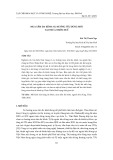
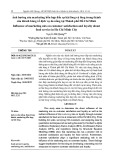
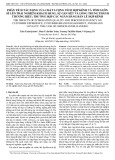
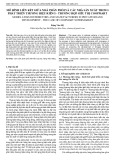
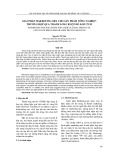
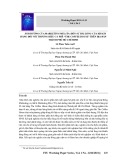
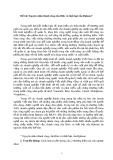
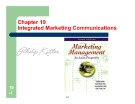
![Chiến lược xúc tiến hỗn hợp: Tài liệu [năm] (nếu có)](https://cdn.tailieu.vn/images/document/thumbnail/2015/20150122/anhduongit/135x160/6031421897147.jpg)

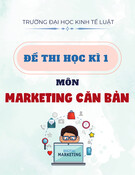
![Đề thi Quản trị marketing kết thúc học phần: Tổng hợp [năm]](https://cdn.tailieu.vn/images/document/thumbnail/2025/20251014/elysale/135x160/24261760434715.jpg)












